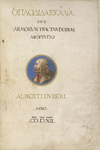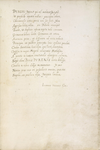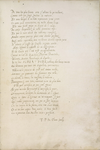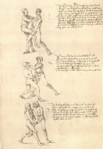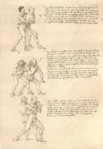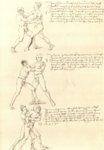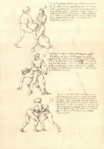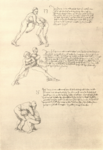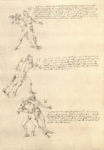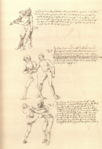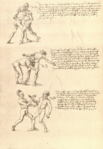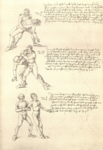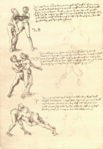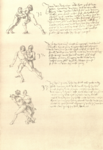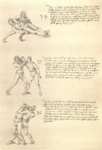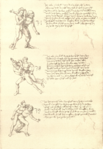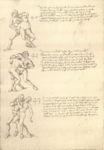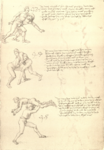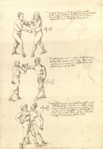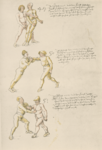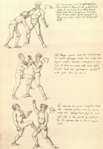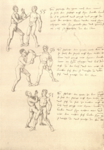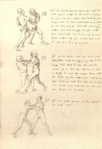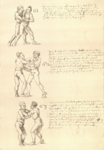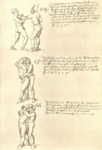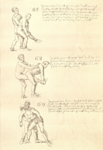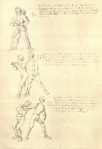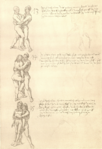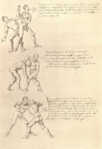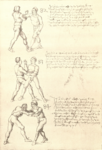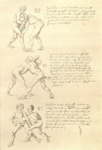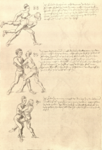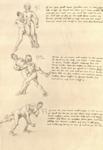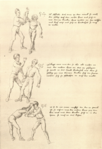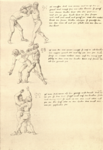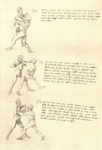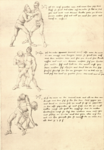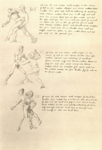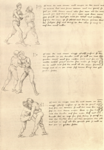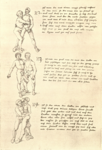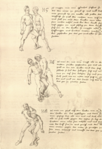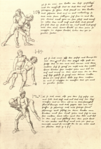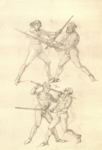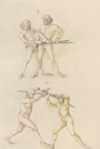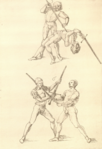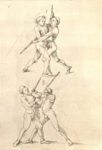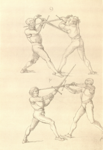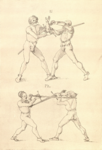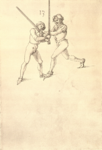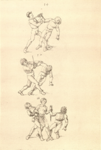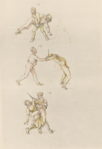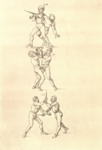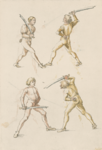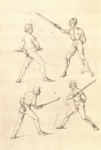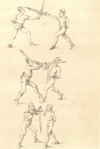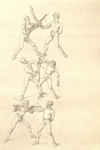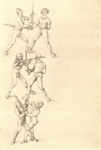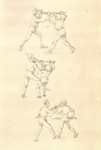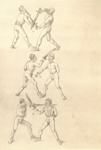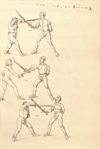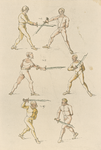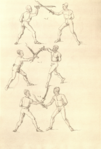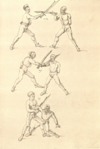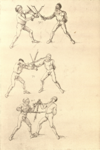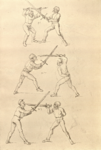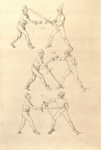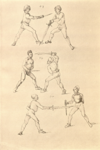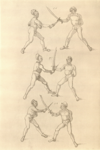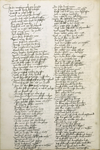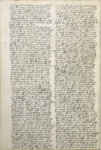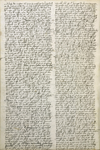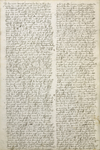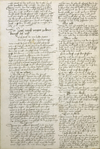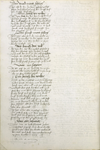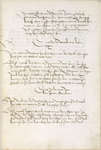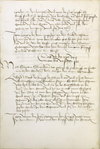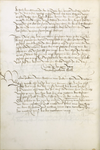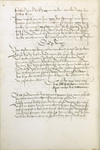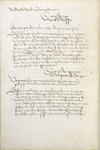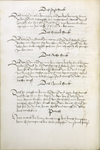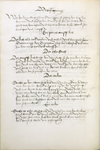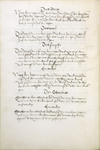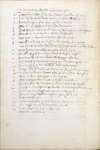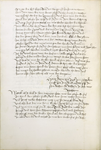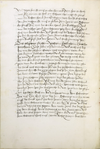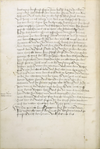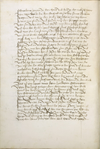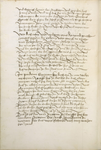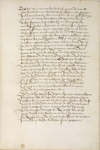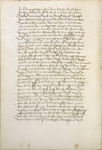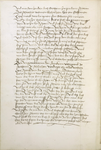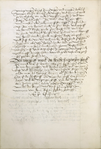|
|
You are not currently logged in. Are you accessing the unsecure (http) portal? Click here to switch to the secure portal. |
Oplodidaskalia sive Armorvm Tractandorvm Meditatio Alberti Dvreri (MS 26-232)
| Οπλοδιδασκαλια sive Armorvm Tractandorvm Meditatio Alberti Dvreri | |||||
|---|---|---|---|---|---|
| MS 26-232, Albertina Vienna, Austria | |||||
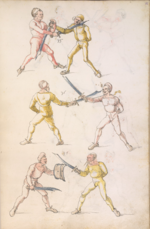 Folio 61r | |||||
| |||||
| |||||
| Type | |||||
| Date | ca. 1512 | ||||
| Place of origin | Nuremberg, Germany | ||||
| Language(s) | Early New High German | ||||
| Author(s) | Unknown | ||||
| Scribe(s) |
| ||||
| Illustrator(s) | Albrecht Dürer | ||||
| Size | 127 folia | ||||
| Format | Generally single-sided; two or three illustrations per side, with text on the right | ||||
| Script | Bastarda | ||||
| Exemplar(s) | Codex I.6.4º.2 (1470s) | ||||
| Treatise scans |
| ||||
Οπλοδιδασκαλια sive Armorvm Tractandorvm Meditatio Alberti Dvreri ("Weapon Training, or Albrecht Dürer's Meditation on the Handling of Weapons", MS 26-232) is a German fencing manual created in 1512 by Albrecht Dürer,[1] and is thus the earliest known fencing manual illustrated by a master artist. The original currently rests in the Graphische Sammulung of the Albertina in Vienna, Austria. This treatise, like all of Dürer's fencing material, appears to be connected with the visit of Emperor Maximilian I to Dürer's home city of Nuremberg in 1512.[1]
Dürer was an important figure in the German renaissance, and is noted for his realistic depictions of human anatomy; this is significant as the art in earlier fencing manuals is often considered distorted or otherwise less unreliable. Much of the material seems to be copied from the earlier treatises of the Codex Wallerstein, making it part of the supposed Nuremburg tradition. The Codex 1246 seems to have been copied in turn from this manuscript in the early 1600s; the additional content in that version might mean that the MS 26-232 is incomplete in its current state.
Provenance
The known provenance of the MS 26-232 is:[2]
- Created by Albrecht Durer in Nuremberg in 1512, probably for Holy Roman Emperor Maximilian I.
- Early 1600s - Copied into the Codex 1246 by an unknown scribe.
- 1823 - Discovered in Styria, Austria, by theologian Vincenz Weintridt.
- 1833 - Presented to Emperor Franz I by Weindridt.
- Present - Held by the Albertina in Vienna, Austria.
Contents
| Folio | Section | ||||||
|---|---|---|---|---|---|---|---|
| Ir - 3v | Front matter
| ||||||
| 4r - 12r | Blank | ||||||
| 14r - 53r | Grappling teachings from the Nuremberg tradition | ||||||
| 53r - 59r | Blank | ||||||
| 60r - 66r | Longsword teachings from the Nuremberg tradition | ||||||
| 66v - 67v | Dagger teachings from the Nuremberg tradition | ||||||
| 68r - 72r | Blank | ||||||
| 73r - 92r | Messer teachings from the Nuremberg tradition | ||||||
| 93r - 95r | Blank | ||||||
| 96r - 101v | Gloss of the Epitome on the Messer by Johannes Lecküchner | ||||||
| 102r - 104r | Blank | ||||||
| 105r - 124r | Gloss of Johannes Liechtenauer's Epitome by Pseudo-Peter von Danzig | ||||||
| 125r - 127r | End matter
|
Gallery
|
|
As the Albertina has thus far declined to produce new scans, only the fragmentary facsimile published by Friedrich Dörnhöffer in 1910 is currently available. |
Additional Resources
- Dörnhöffer, Friedrich. Albrecht Dürers Fechtbuch. Vienna: F. Tempsky, 1910.
- Dürer, Albrecht and Wassmannsdorff, Karl. Die Ringkunst des deutschen Mittelalters. Liepzig: Priber, 1870.
- Strauss, Walter L. The complete drawings of Albrecht Dürer. New York: Abaris Books, 1974. ISBN 0913870005
References
- ↑ 1.0 1.1 Friedrich Dörnhöffer. Albrecht Dürers Fechtbuch. Vienna: F. Tempsky, 1910.
- ↑ Jane Campbell Hutchinson. Albrecht Durer. Princeton University Press, 1992.

